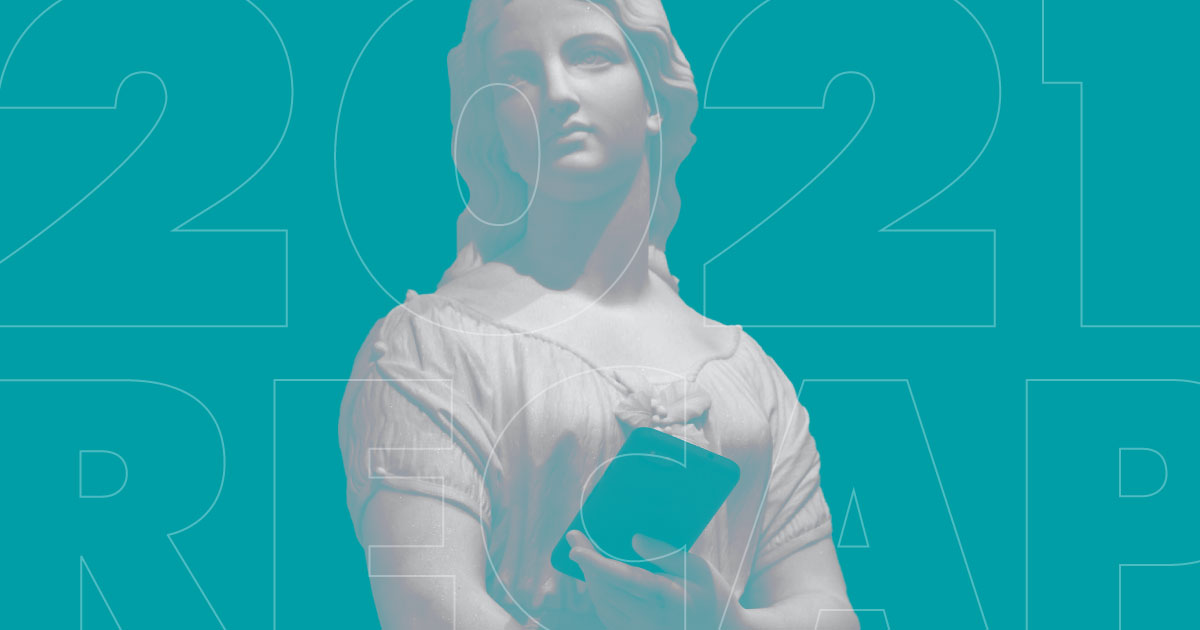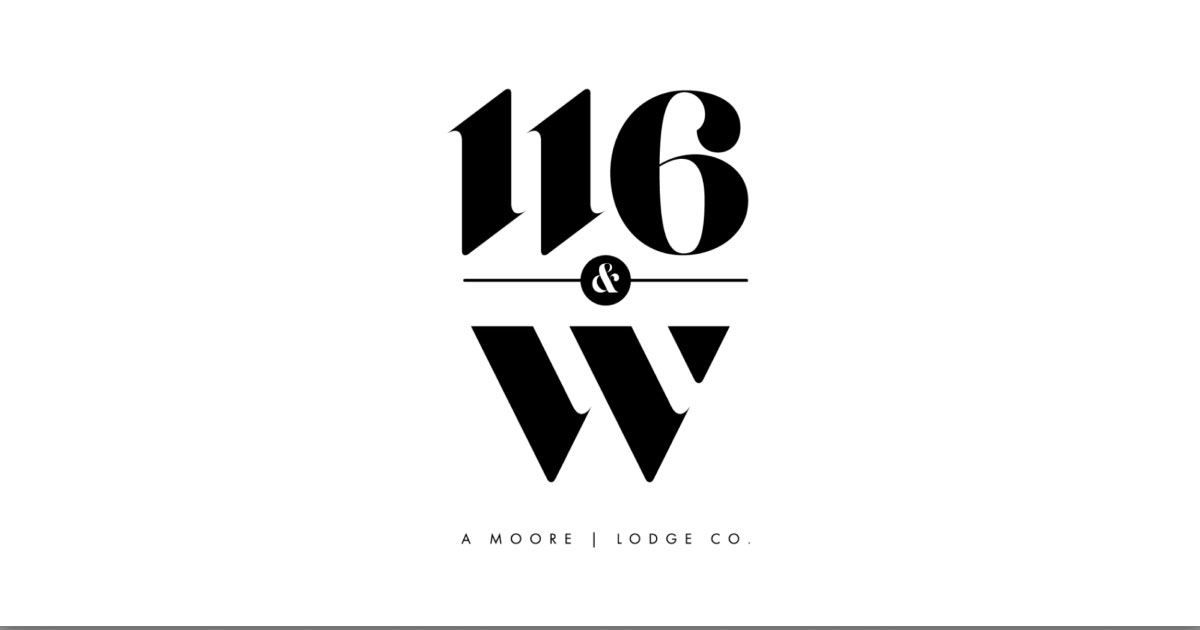1.10.22 | read time: 6.5 min
Media in 2021: A Year in Review
116 & West
Holy smokes. We did it. Congrats to everyone for making it through another rough year. We’re now looking forward to a bright, shiny 2022. (Well, maybe not exactly bright and shiny—2022 already has a few stains on it—but still, we’re excited.)
Although we’re a forward-looking company in a forward-looking industry, we would be remiss if we didn’t take one last peek in our rear-view mirror at the 2021 media landscape and see what it can teach us about where we’re headed.
The following is a short list of a few BIG things that happened in 2021, and how it might continue to impact us, our clients, and our industry through 2022 and beyond.
Meta Flags Content
In order to mitigate misinformation on its platforms, Meta (The Facebook company back then) began to flag content about sensitive issues such as COVID-19, politics, social issues, and elections. For example, posts that contain the words “COVID or CORONAVIRUS” will automatically be populated with a statement to visit the COVID-19 Information Center for vaccine resources.
Although these content flags are generally helpful in providing users with science-backed information rather than opinion, the guidelines about what or what doesn’t make a “sensitive issue,” or what makes something flaggable currently remains unclear.
So, companies and individuals who post about COVID, may have to endure a special box around their post. Brands may also have to alter their ad copy so they don’t get flagged and are unable to post to the platform(s).
We anticipate these content flags to remain through 2022 and beyond. COVID has yet to be contained, and the midterm elections will certainly provide fodder for social media content. So, stay vigilant as you create your content, and stay up-to-date on any of Meta’s updated guidelines. If you’re on a tight timeline, and don’t want your ad to get caught up in the process, play it safe and refrain from using language that could be flagged.
Apple Makes Data Tracking Difficult
One of the biggest happenings that came out of 2021 was Apple’s change to their data tracking protocols in the iOS 14.5 update. When the update was pushed, apps could no longer track how their users behaved, unless the user gave the app permission to do so.
It turns out, not many people gave permission. Customers on apps have a unique Identifier for Advertisers (IDFA). As people opt out of sharing this identifier (only 25% of customers have allowed tracking), they’re being removed from targeted advertising.
For iPhone users, this privacy update feels comforting and long overdue. But for marketers and app companies, the loss of this information means that they can no longer target users based on this data. For instance, a skateboard company cannot utilize customer data to target an ad based on a person’s user behavior, or similar interests. This lack of data makes it difficult to pinpoint the rider who may be interested in a board.
Targeting is helpful in delivering ads that are personalized and relevant. Without this data, marketers could lose space and dollars on ads that aren’t relevant, and so will likely have lower success metrics. Companies will have to look elsewhere for ways to more precisely connect with potential customers.
Don’t look for the opt-in numbers to rise in 2022. Companies will continue to hone their skills in developing new ways to learn about and connect with their target audience.
Nielsen Takes a Hit
Nielsen TV ratings have long been used by agencies and media vendors to measure how many people were exposed to content and advertising. We use multiple metrics such as reach, frequency, averages, and percentages to derive who is watching what and whether our ads reach their target audience.
So, the ad industry collectively gasped when the Media Rating Council (MRC) suspended Nielsen’s accreditation for the national TV and local TV rating service.
MRC, under pressure from the Video Advertising Bureau (VAB), suspended the accreditation because Nielsen underreported viewership numbers during the COVID-19 crisis.
Because of the rise of connected television (CTV) and over-the-top media (OTT), the viewership-measurement landscape is much more complex. The measurement tools and products have not kept up with the media innovations, leaving advertisers and media vendors to have less-than-accurate numbers from which to buy, sell, and plan from.
As television gets more and more digitized, how we measure who’s watching will have to change. Because of the continual innovations and options in how people consume visual media, the trusted tools we’ve long used will have to innovate alongside the media itself. It’s a challenging time, but one that’s necessary. We think this will continue to impact our business for the next several years.
Podcasts Keep Winning
Americans love their podcasts. A recent report states that 55% of Americans say they listen to podcasts–that’s 155 million people! By 2022, it’s projected that 88.9 million listeners will tune in each month. By 2023, it’s estimated to be 94.7 million!
According to Marketing Dive, podcast ad revenue should jump to $1.13 billion by next year, showing that ad spend is increasing with the listenership.
Not only is the podcast audience large, it’s also receptive to advertising. According to a 2021 report, 86% of respondents say they remember an ad from a podcast. And, 76% of podcast listeners say they’ve taken action after hearing an ad on a podcast.
We feel pretty confident the podcast game will remain strong through the foreseeable future. With over 2 million active podcasts globally, listeners have almost unlimited options for content, and advertisers have a huge opportunity to reach an audience.
NFTs Come to Marketing
NFTs (Non-Fungible Tokens) are “digital assets like bitcoin, only they’re unique and irreplaceable, like owning an original work of art online” (AdAge). People buy and sell NFTs, and now they are making a splash in the marketing space. AdAge has been documenting how NFTs are working their way into advertising. It’s done differently by each company, but they seem to be racking in extra money from these endeavors.
For example, Budweiser sold 1,936 one-of-a-kind digital beer cans. They had 1,900 priced at $499 and another 36 priced at $999. They said these NFTs are “designed to celebrate the brand’s iconic history while also moving Budweiser into the metaverse” (AdAge). These one-of-a-kind digital beer cans sold out within an hour, and from this one NFT stunt Budweiser made around $984,000.
The NFL is also jumping on the NFT train. According to AdAge, the NFL is offering complementary NFTs to fans who have attended specific games. To be eligible, the ticket must be purchased through the NFL Ticketing Network, then accessed through a post-game email. The email provides a link to a NFT marketplace where the recipients can trade or sell them. This adds a new aspect of novelty to purchasing a ticket and attending a game.
This new era of NFTs is still unfolding, as more and more companies join the offerings. It’s hard to know how NFTs will move into 2022, but if big companies like Budweiser and the NFL continue to stake ground in the virtual asset world, it will likely stick around and transform into bigger and better offerings.
It’s another arm of branding and product offering that marketers can play with. NFTs can give loyal fans and customers more ways to engage with companies, and provide ways to expand the buyer/seller relationship in new ways. NFTs offer an exciting opportunity for customers to own a piece of their favorite brands—which might turn out to be one of the best ways to acquire and retain customers.
Game On, 2022
If we learned anything in 2021, it’s that the media landscape is forever changing, and our job is to stay aware of any changes. WE know that technology is only going to get more advanced, and people are going to keep changing how they consume media. We always do our best to help our clients find the right media mix for their goals and their audience. As we move forward, that means jumping into some exciting new trends that could pay big dividends for our clients.
Ready for your 2022 campaigns? We can help.
Contact Us






